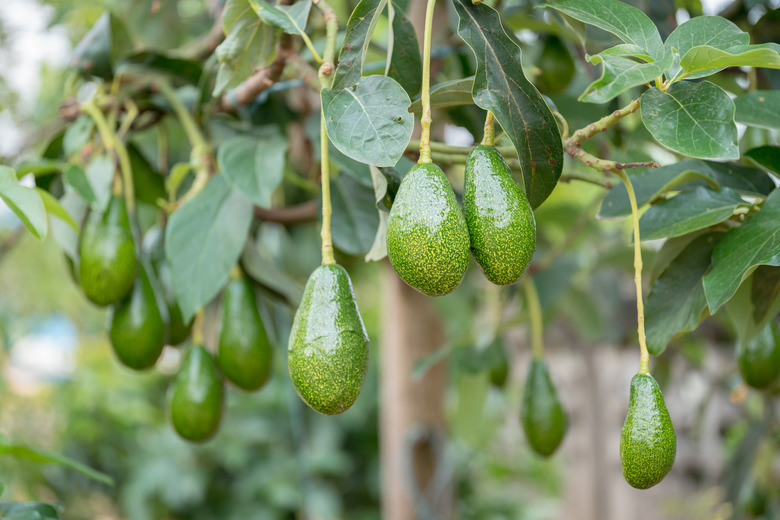How To Grow Avocado Trees From Cuttings
Any gardener who loves avocados (Persea spp.) occasionally dreams of installing an avocado tree in the backyard to provide a personal source of free, organic fruit. Why not raise your own from a cutting?
You can grow an avocado tree from an existing one by germinating the seed or rooting the cuttings. The two processes are similar; the goal is to cultivate tenderly for several weeks in order for strong roots to set. As with any method of avocado planting, the tree you produce from cuttings will not likely bear any fruit for the first seven to eight years. Avocado trees make great houseplants or unique additions to the garden.
Things Needed
-
Medium-size planting container
-
Pencil
-
Fertilizer
How to Grow Avocado Trees From Cuttings
1. Take an Avocado Cutting
Obtain a cutting from a healthy avocado plant by cutting off a shoot that is between 5 and 6 inches long. Use a sharp pruner to make the cut and then trim any excess leaves that have sprouted at the bottom of the shoot.
2. Prepare a Potting Soil
Mix together a potting soil of one-half peat moss and one-half perlite. Fill a medium-size planting container about three-quarters full. This container will be kept indoors and used to house the avocado cutting until it has set roots and become a seedling. Place the pot in a warm spot that receives indirect light, such as a windowsill that faces east. Thoroughly water the soil before planting.
3. Use Rooting Hormone
Make two small cuts on either side of the base of the cutting. Dip the base of the cutting in a liquid rooting compound (indole butyric acid, known as IBA) for a few seconds. IBA is a plant hormone and will stimulate the growth of roots on the shoot.
4. Plant the Cutting
Use a pencil to poke a hole about 1 to 1 1/2 inches deep in the potting mix in the prepared pot. Insert the base of the cutting and tightly fill in the soil mixture around it. Keep the shoot well moisturized but only water if the soil appears dry. Roots should form at the base of the shoot after two weeks. If you tug gently on the cutting, you will feel a slight resistance if there are roots.
5. Transplant the Avocado Seedling
Continue monitoring the seedling for another three weeks; then, it is time to transplant it. Either transplant it into a larger indoor pot filled with fertilized, sandy potting soil or transplant it in your outdoor garden. When transplanting avocado trees to the outdoors, remember that they shrivel in direct sunlight. Avocados need warmth but also shade. U.S Department of Agriculture plant hardiness zones 10 to 12 are the best for growing these heat-loving plants. Make sure the outdoor avocado has plenty of room to spread its roots.
6. Fertilize the Avocado Plant
Ongoing care for the avocado tree includes adequate water and fertilizer. Fertilize the indoor plant every three weeks and the outdoor plant every month. Once the plant reaches the age of 1 year, reduce fertilizing to about four times a year and water when the soil feels dry. They are hardy when mature and can withstand most conditions except frost.
